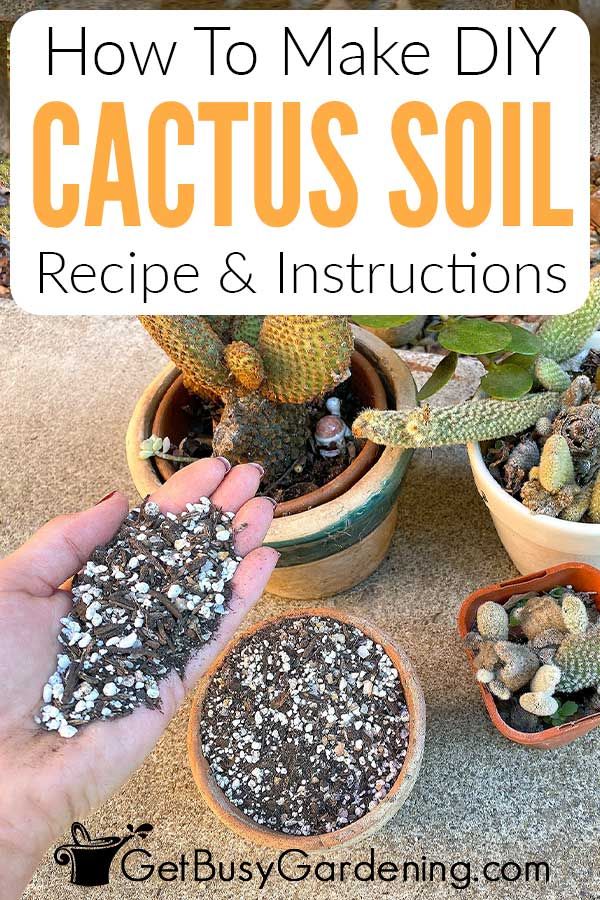When it comes to nurturing healthy cacti and succulents, one of the most consequential aspects is the choice of soil. Have you ever pondered what goes into the perfect soil mix for your prickly friends? Choosing an appropriate soil can pose a delightful challenge, especially seeing that these plants have unique needs. Understanding these requirements and experimenting with various mixtures can lead to thriving specimens that adorn your space beautifully.
Before diving into the specifics, it’s essential to understand why cacti and succulents differ from traditional houseplants regarding their soil requirements. Both types of plants thrive in arid environments, leading to the evolution of their exceptional water retention capabilities through specialized adaptations. Consequently, a soil mix that allows for superior drainage is imperative for optimal growth. Let’s explore the complexities of soil selection for your beloved green companions.
Benefits of Well-Draining Soil for Cacti and Succulents
Well-draining soil facilitates the necessary conditions for cacti and succulents to flourish. These plants do not thrive in overly moist environments; rather, they require soil that promotes airflow and prevents water retention around the roots. High moisture levels can cause root rot, a devastating ailment that can lead to plant demise.
This is where the concept of aeration comes into play. A soil mix that is porous allows for air to circulate, enabling roots to access oxygen essential for photosynthesis. Additionally, well-structured soil encourages healthy root development, leading to enhanced stability and robust growth. For any succulent enthusiast, achieving this delicate balance between drainage and moisture retention is paramount.
Core Ingredients for the Ideal Cactus and Succulent Soil Mix
The ideal soil mix for cacti and succulents typically incorporates several critical components, each fulfilling a specific function to foster plant health.
1. Potting Soil Base
A primary ingredient in your soil mix is a quality potting soil. While traditional potting mixes retain moisture, you can modify them for these arid dwellers. Employing a lightweight, peat-free potting mix can serve as a solid foundation. The peat content can hold moisture, but combining it with other components will offset this trait. The base should act as the core while allowing modifications to enhance drainage.
2. Pumice or Perlite for Aeration
Pumice and perlite are essential amendments that enhance drainage and aeration. Pumice is a volcanic rock with excellent water-retention abilities, while perlite is a lightweight, expanded volcanic glass that also promotes drainage. Both materials increase the pores within your soil mix, permitting airflow and preventing compaction. An ideal ratio might involve equal parts potting soil, pumice, and perlite.
3. Coarse Sand or Grit for Robust Drainage
Incorporating coarse sand or grit can significantly augment the drainage capabilities of your mix. Sand provides additional structure that aids in further disrupting any compacting tendencies. Look for a gritty substance such as horticultural sand, as it avoids the finer granules that can clog pore spaces, thereby impairing drainage efficiency.
Creating Your Own Soil Mix: A Hands-On Approach
Now that you’re equipped with the core components, it’s time to consider how to craft your unique soil mix. Many gardening enthusiasts revel in this process. Creating your own blend offers endless possibilities to play with proportions, tailoring it to meet the specific needs of each succulent or cactus species in your collection.
Begin by gathering your base ingredients: a quality potting mix, pumice, perlite, and coarse sand. In a large container, mix your base ingredients thoroughly. A suggested base ratio is 50% potting soil, 25% pumice or perlite, and 25% coarse sand. Adjust the ratios based on your plants’ growing conditions, experimenting until you’ve achieved a blend that holds just the right amount of moisture without becoming waterlogged.
Tip: After mixing, you might conduct a simple test for drainage by pouring water over your blend and observing how quickly it flows through. A well-draining mix will allow water to percolate rapidly.
Monitoring and Adapting: Care for Your Soil
Even after creating the perfect soil mix, be vigilant about your plants’ health. Each growing season, take note of their responses. Are they thriving? If you notice them struggling or yellowing, consider adjusting your soil consistency or watering habits. Over time, your plants will provide feedback, allowing for fine-tuning and improvement. Understanding the cyclical nature of plant care, accompanied by climate changes or varying humidity levels, will bolster your ability to adapt.
Conclusion: The Path to Succulent and Cactus Success
Choosing or creating a soil mix for cacti and succulents can be a delightful journey, one that requires a bit of experimentation and keen observation. By prioritizing drainage, aeration, and adaptability, you can foster a thriving environment for your beloved green companions. Remember, each plant is unique, just like the individuals who care for them, and cultivating successful growth can lead to a rewarding relationship between you and your cacti or succulents. Embrace the challenge, and watch your plants flourish with the right soil mix.





Leave a Comment